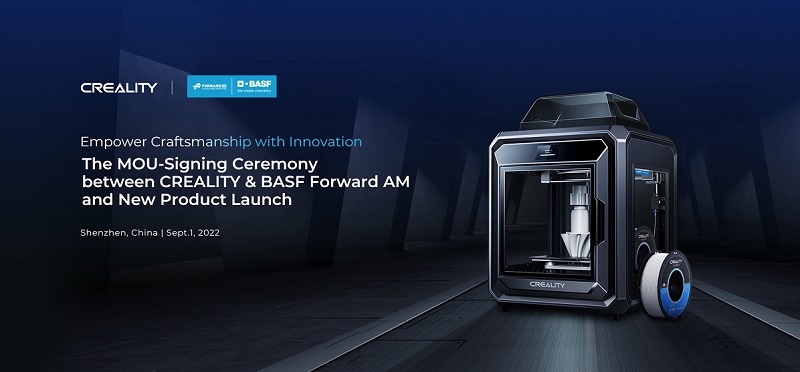As Germany’s manufacturing base continues to face an uphill battle against skyrocketing energy costs, its chemical sector — the fourth largest in the world — is solidifying its position in China’s additive manufacturing (AM) market.
First, Creality announced last week that the company had entered into an agreement to develop industrial AM hardware with BASF. The largest chemical corporation in both Germany and the world, BASF is also one of the world’s largest manufacturer of AM materials, through its Forward AM brand.
Additionally, German chemical conglomerate Lehvoss Group, which produces a variety of AM materials, announced that the company had opened a fourth branch of its Chinese subsidiary, Lehvoss (Shanghai) Chemical Co. Ltd. In addition to Shenzhen and its Chinese headquarters in Shanghai, Lehvoss also has branches in Kunshan and Dalian.

In a press release noting the latest expansion, Arthur Li, the branch manager at Lehvoss Shanghai, commented, “We are excited and happy about this foundation and the expansion of our activities in this important region in southern China. …Supporting end customers, suppliers and processors is particularly important in our plastic business. We can now do this even better with a strengthened local team.”
As for BASF and Creality, the latter also announced the commercial release of its Sermoon D3 industrial desktop printer. And, finally, Creality announced, with BASF, the commercial release of its HP-ULTRA filament, which the two companies developed jointly.

As Lehvoss’s Shanghai branch manager points out, it seems increasingly crucial for German companies to bolster operations within China itself. During much the same timeframe in which Germany’s electric costs were increasing over 500 percent, German investment in China rose to all-time highs. Moreover, this past May, Germany’s trade surplus vanished for the first time in over 30 years, largely thanks to its growing reliance on Chinese imports.
Considering the exploding prices of the main feedstocks used in plastics production, it may make more sense for the German chemical sector to produce closer to where natural gas is cheapest, i.e., China. Beyond that, it is notable that BASF is planning on developing hardware with Creality, given the company’s large share of the desktop printer market. Creating a filament optimized for hardware with such a large install base should certainly be a positive, in terms of solidifying BASF’s market share. Perhaps even more importantly than that, from a longer-term perspective, the deal helps ensure that the German chemical industry is considered indispensable to China’s AM sector.
Subscribe to Our Email Newsletter
Stay up-to-date on all the latest news from the 3D printing industry and receive information and offers from third party vendors.
You May Also Like
3DPOD Episode 198: High Speed Sintering with Neil Hopkinson, VP of AM at Stratasys
Neil Hopkinson, a pioneering 3D printing researcher, played a pivotal role in developing a body of research that is widely utilized today. He also invented High Speed Sintering (HSS), also...
GE Additive Transforms into Colibrium Additive in New Brand Move
One of the largest and most compelling companies in the 3D printing industry, GE Additive, has undergone a rebrand. Now, known as Colibrium Additive, the company and its new name...
HP & INDO-MIM Collaborate to Boost Metal 3D Printing in India
HP Inc. and INDO-MIM, a US- and India-based supplier of metal injection molding (MIM) powders and contract manufacturer, have announced that the two companies will collaborate to accelerate additive manufacturing...
Nylon 3D Printed Parts Made More Functional with Coatings & Colors
Parts 3D printed from polyamide (PA, Nylon) 12 using powder bed fusion (PBF) are a mainstay in the additive manufacturing (AM) industry. While post-finishing processes have improved the porosity of...































